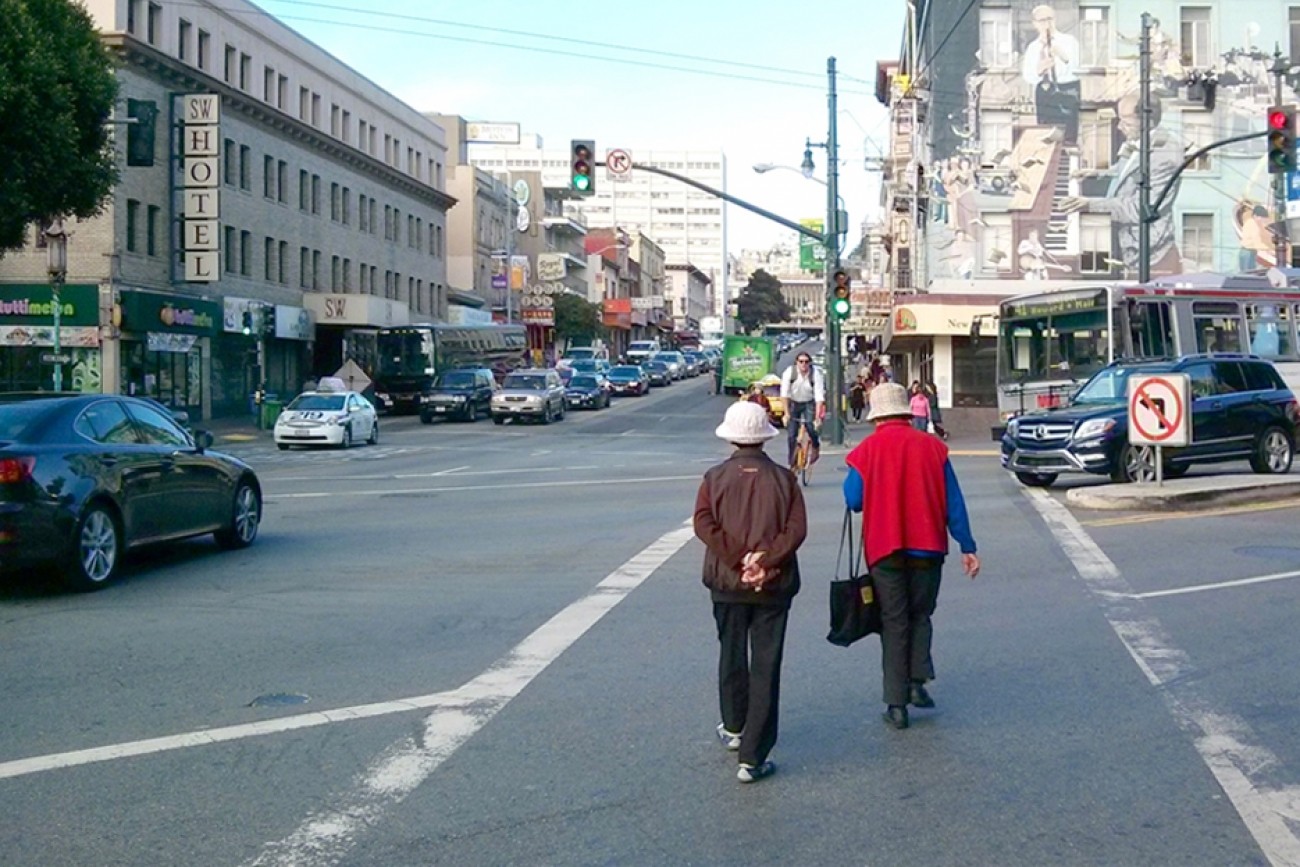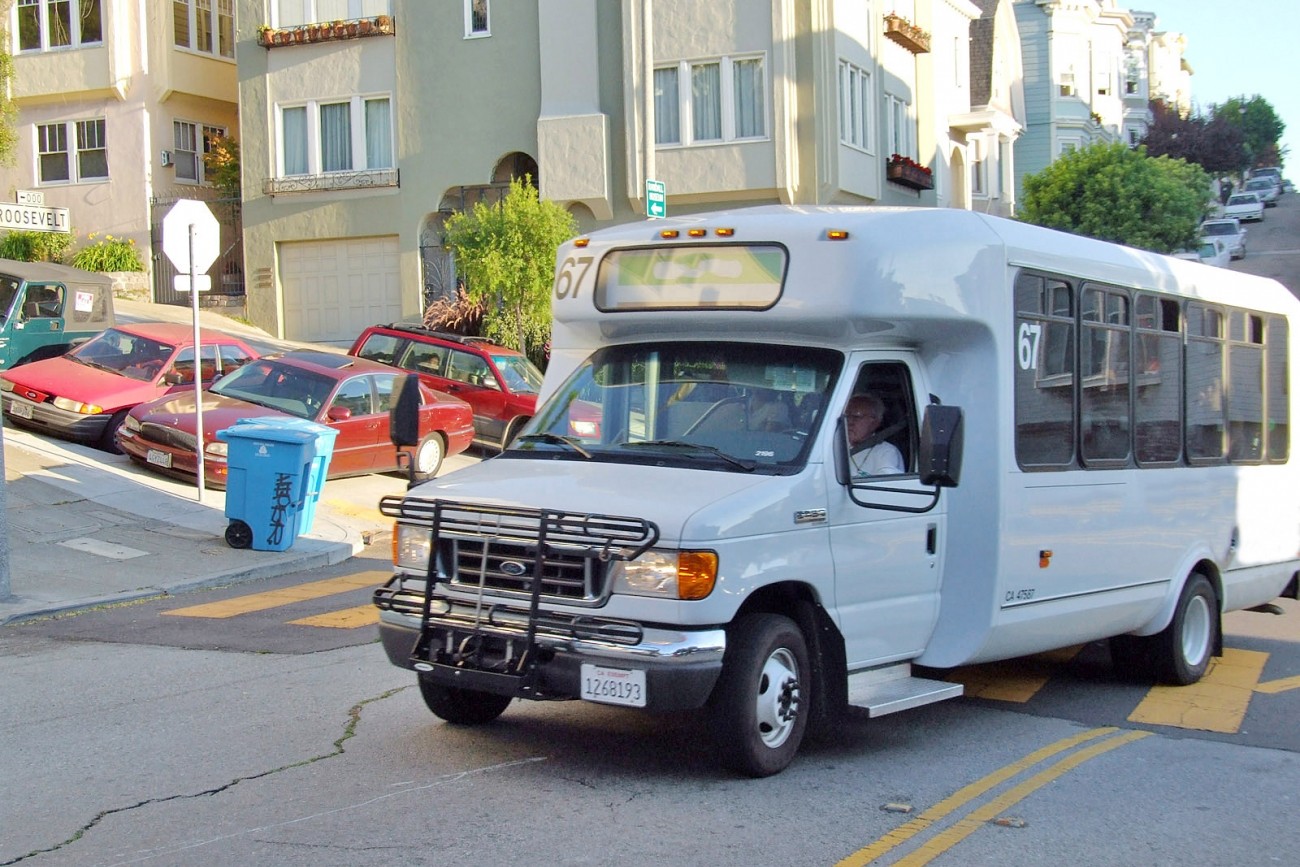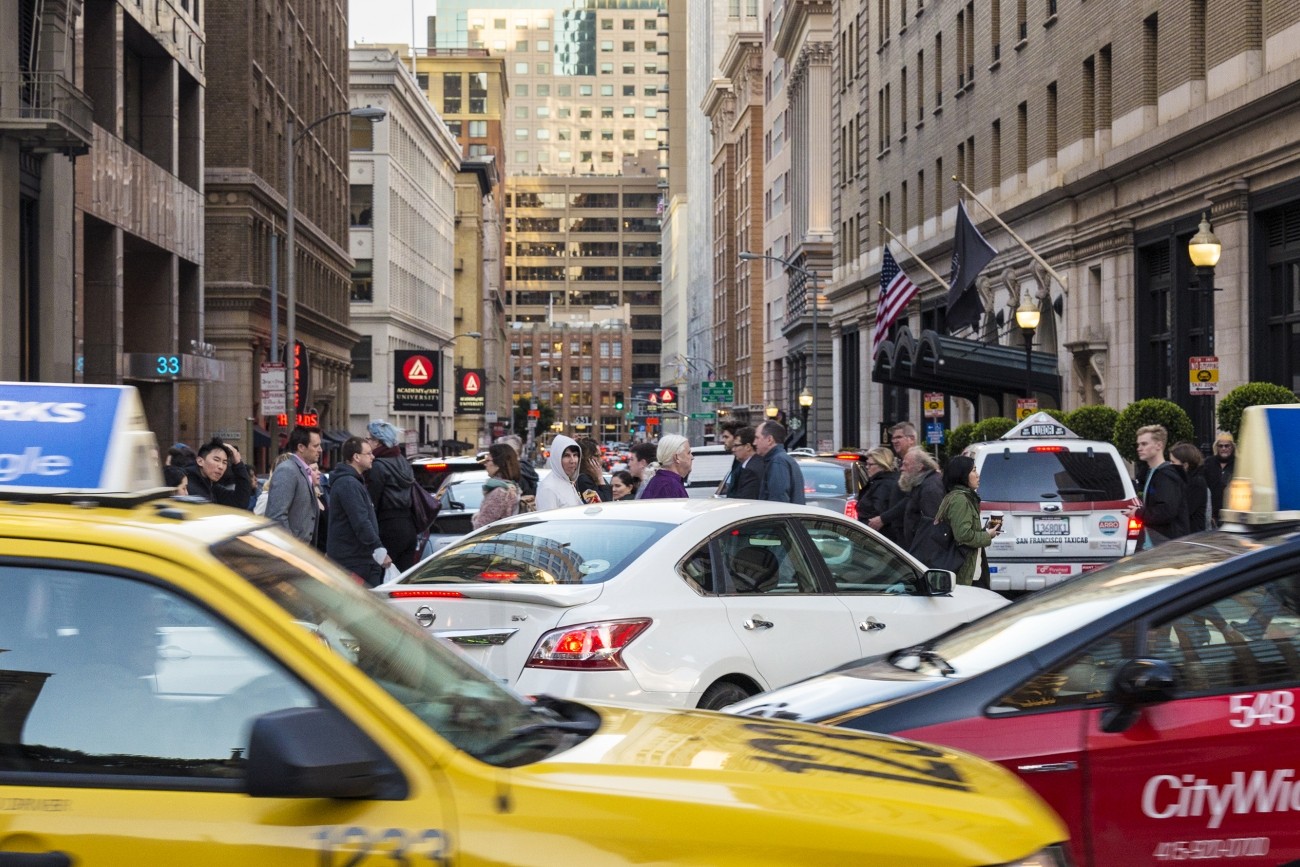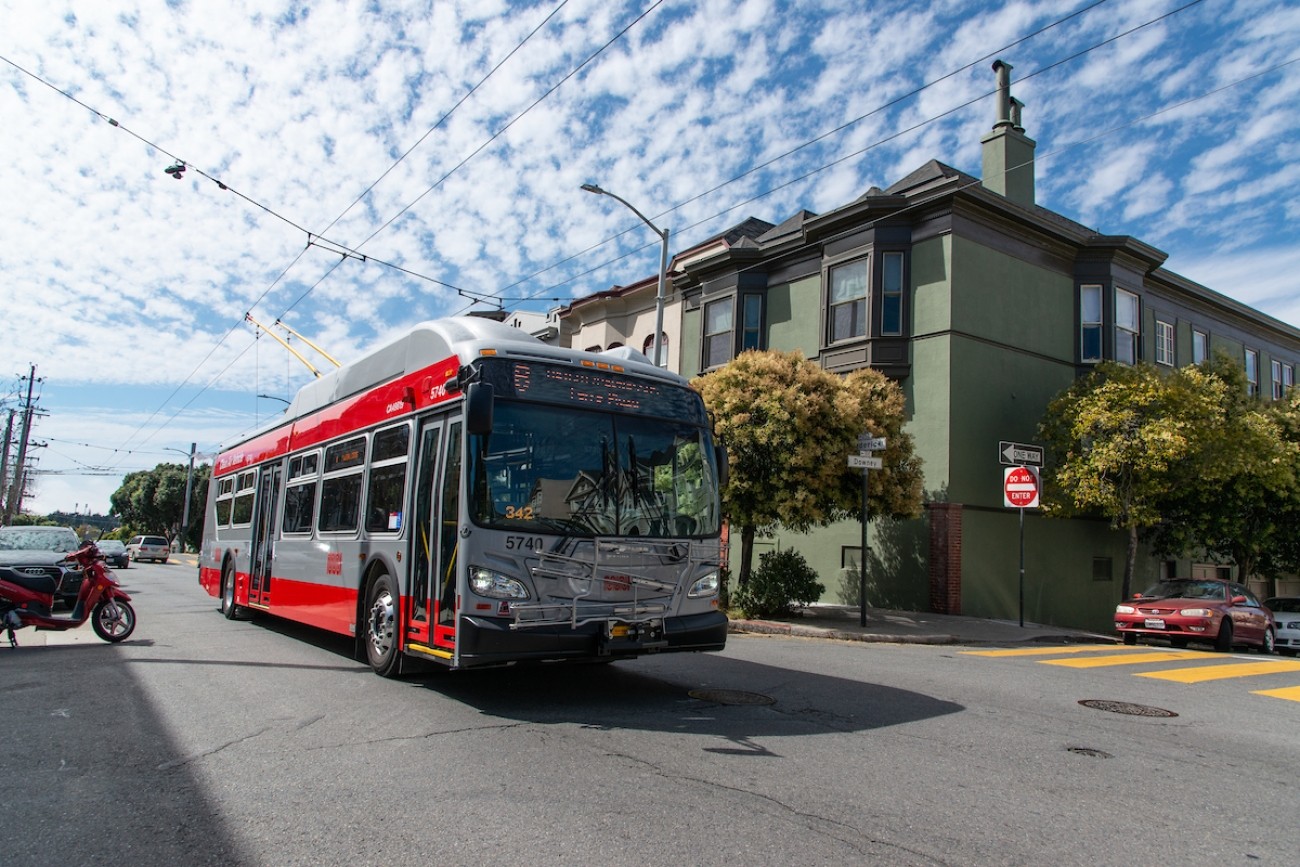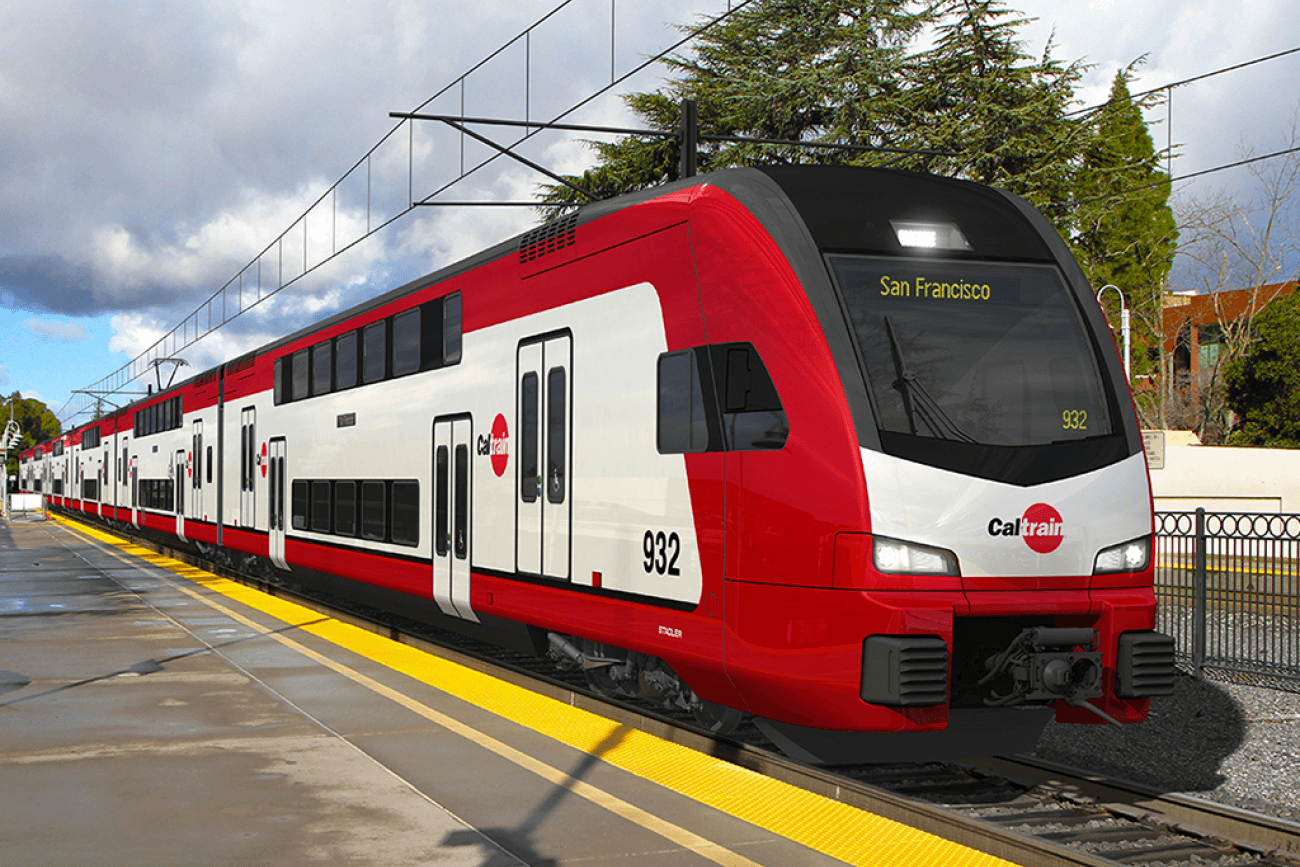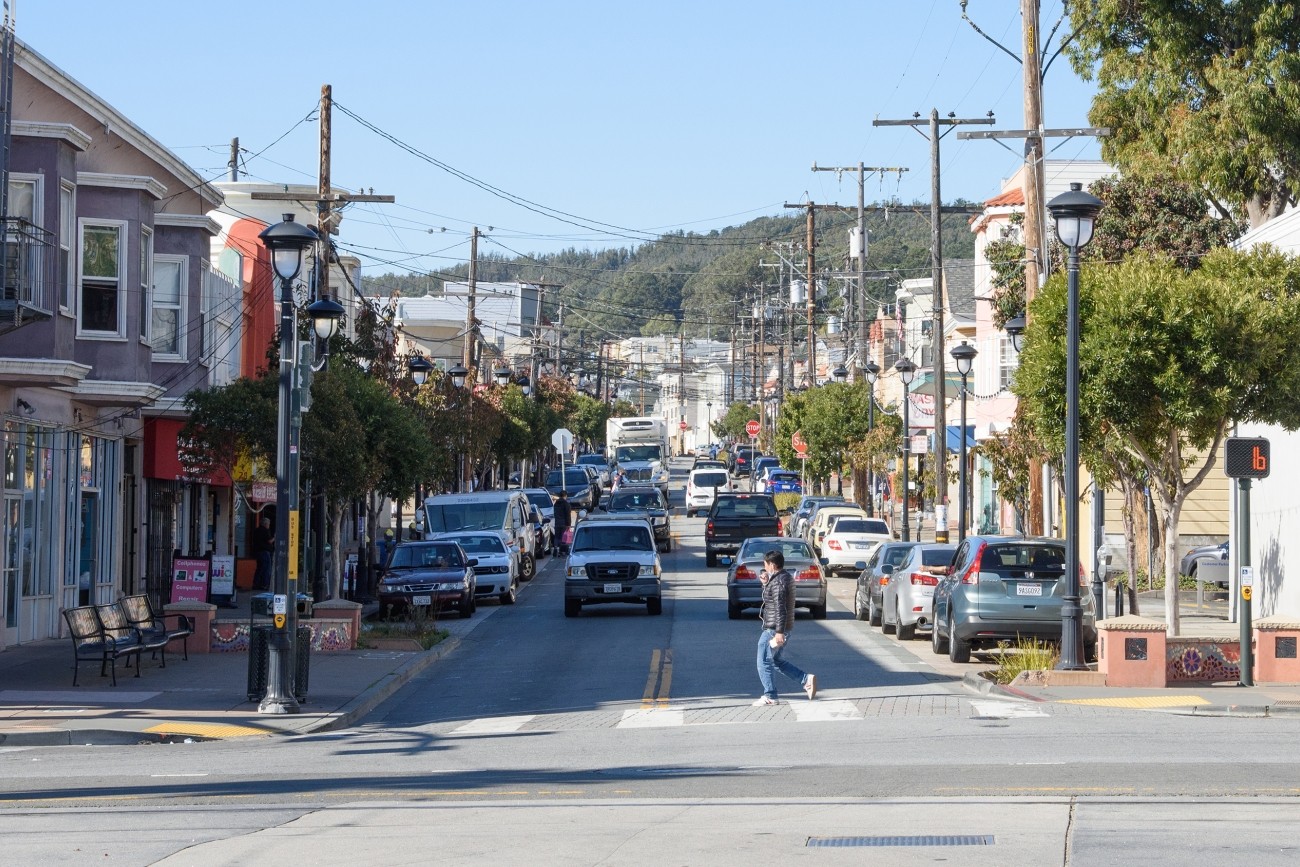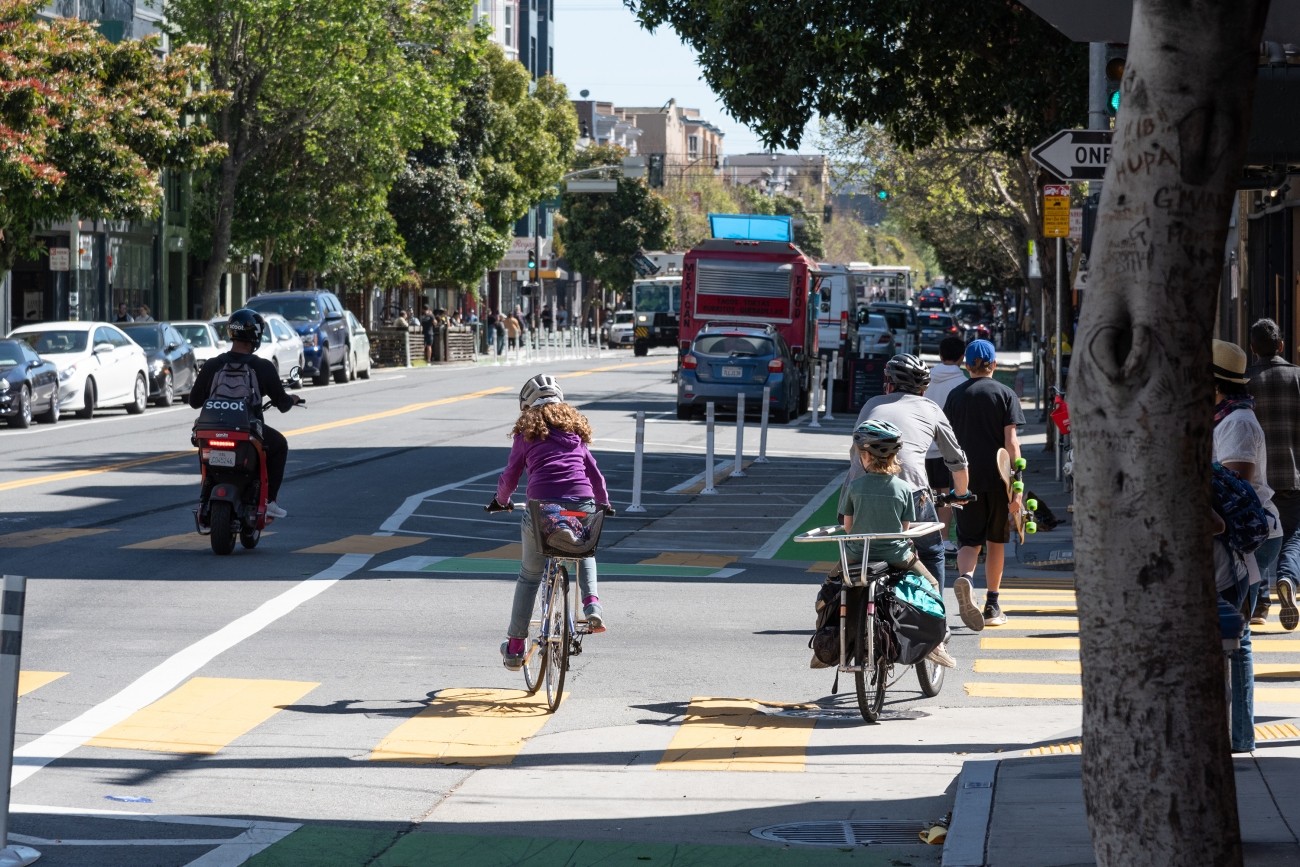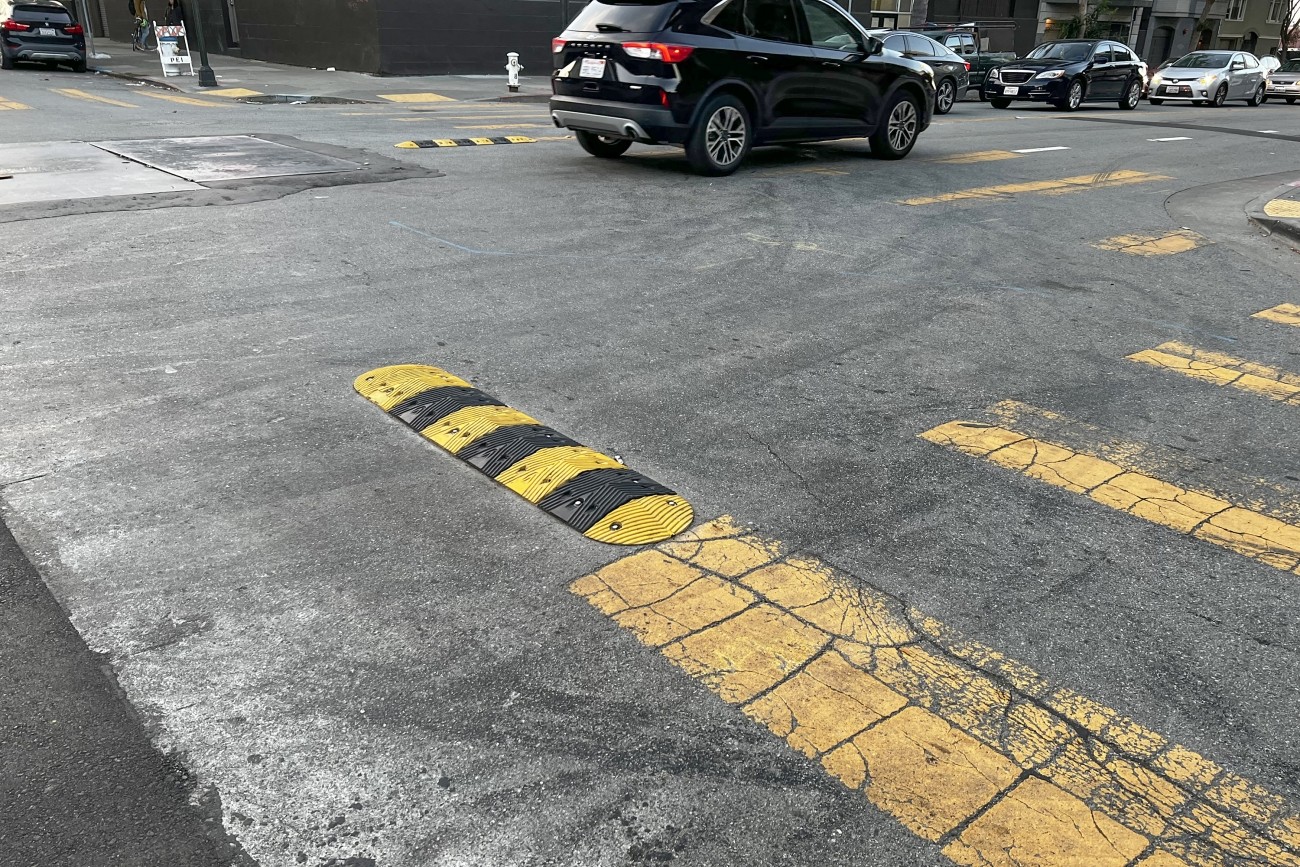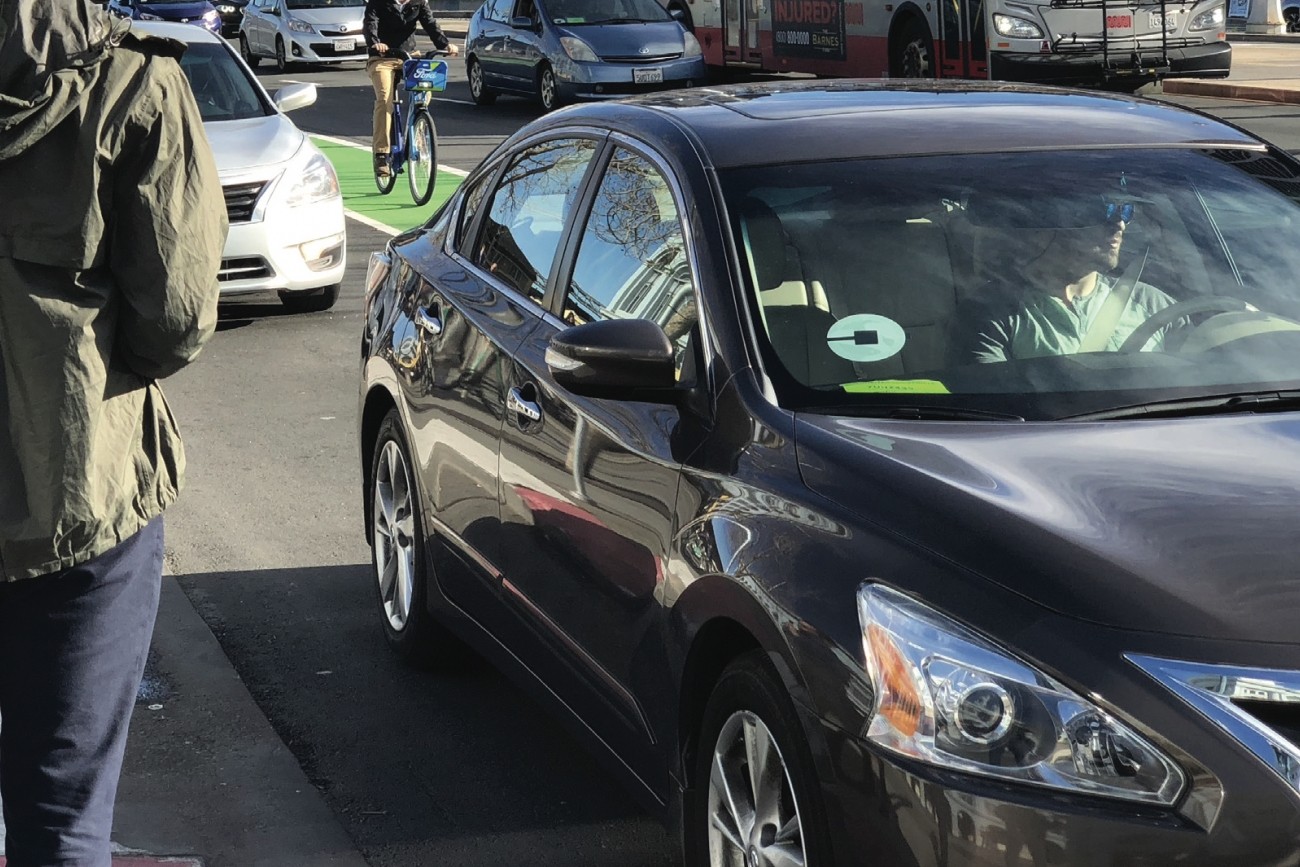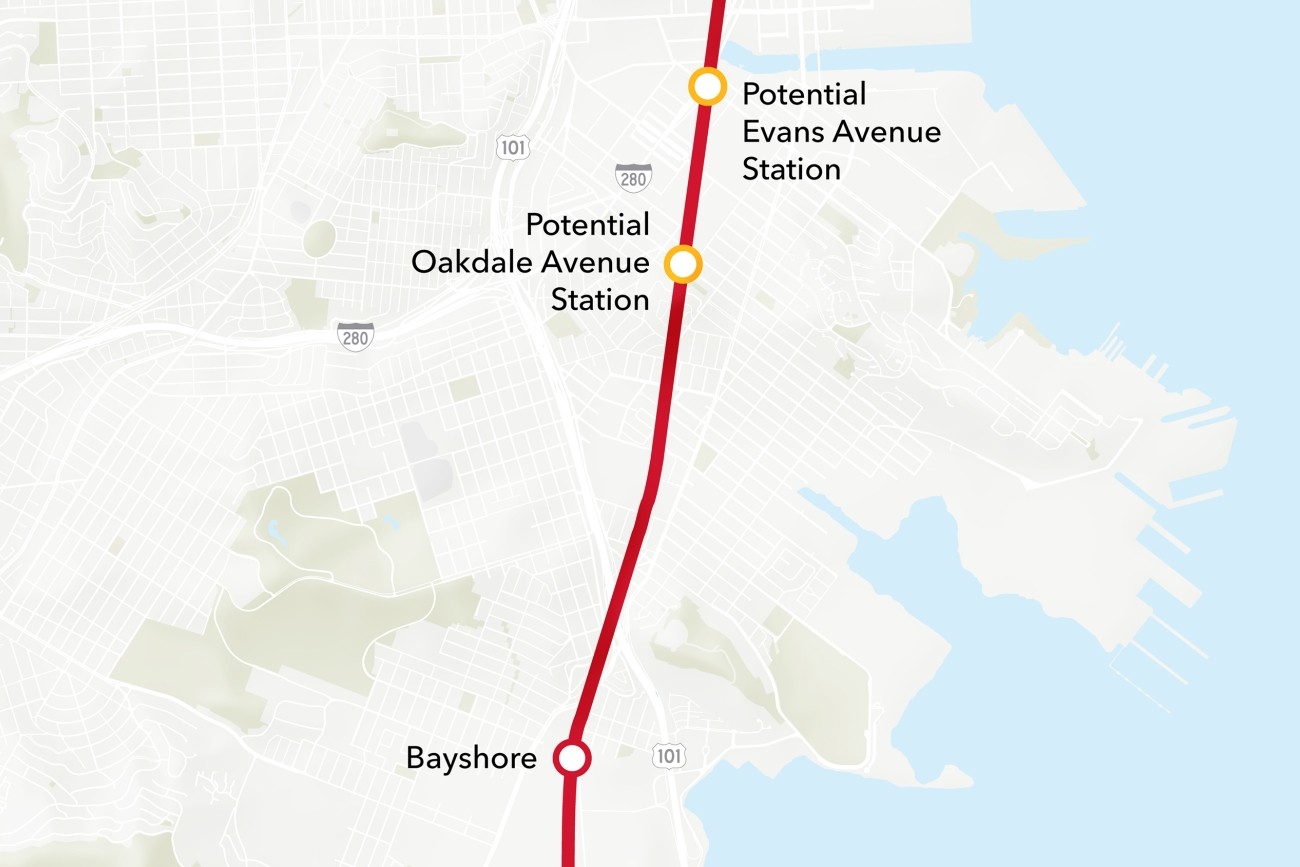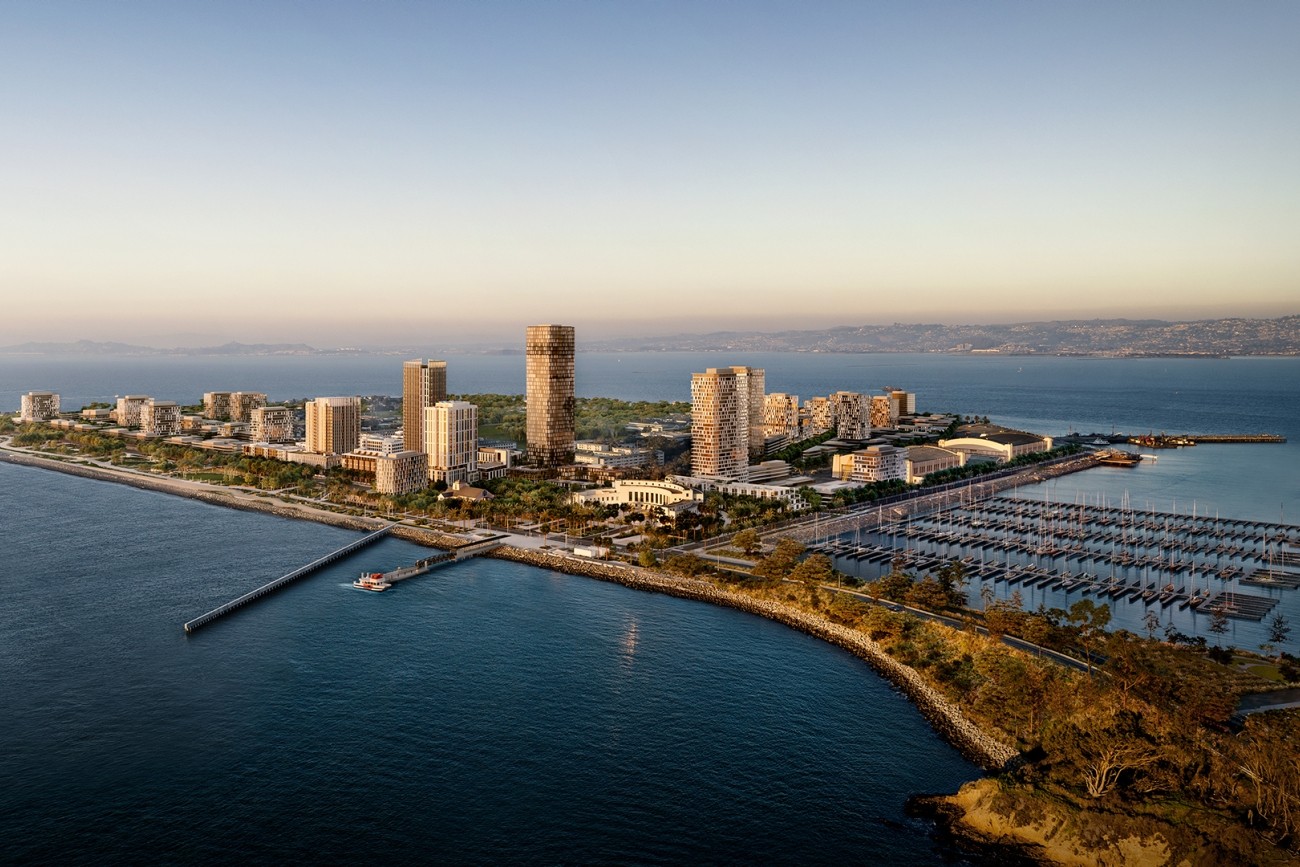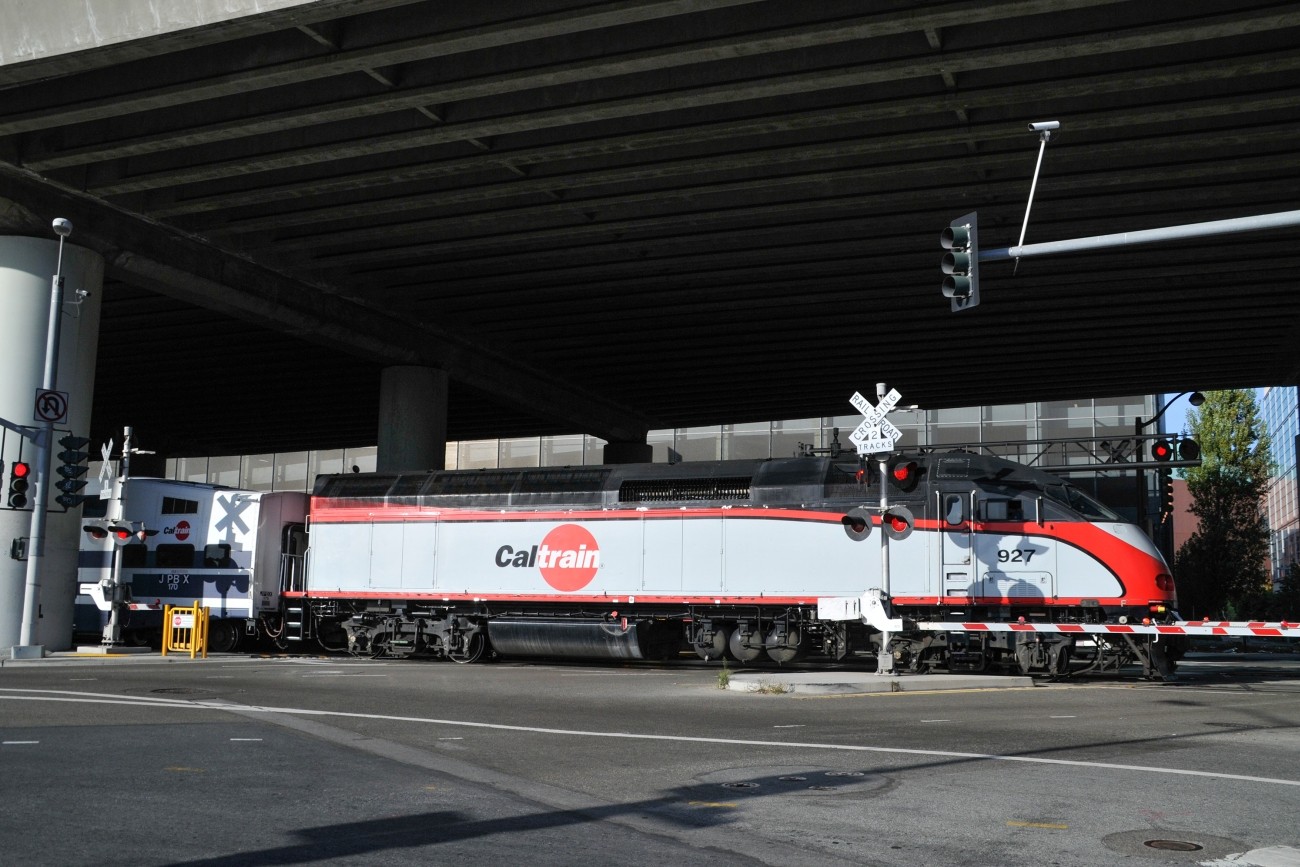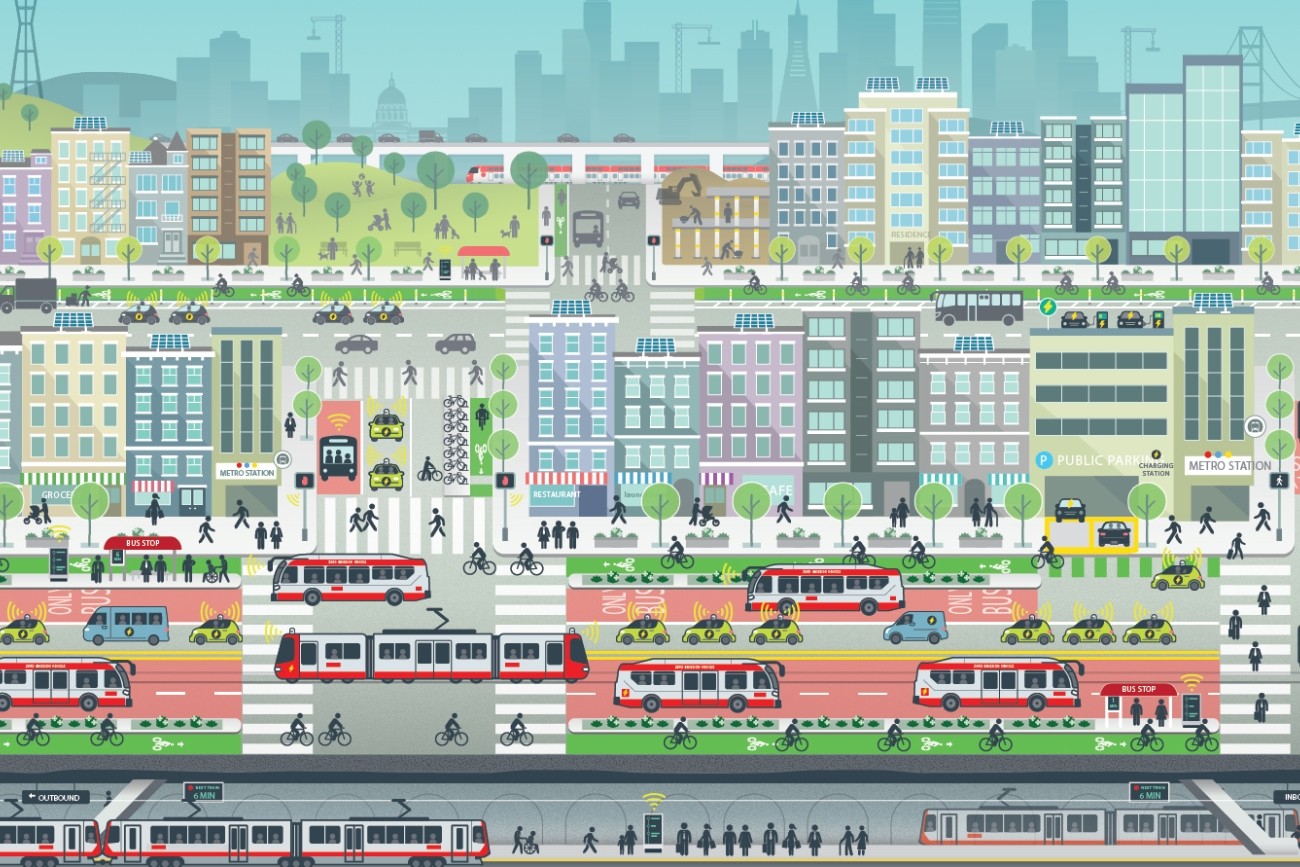Plan Bay Area is a 25-year plan that establishes the nine-county Bay Area region’s vision for land use and transportation.
This plan focused on strategies to improve pedestrian safety on two high pedestrian-injury corridors in Chinatown: Broadway Street between Van Ness and Columbus Avenues, and Kearny Street between Bush and Jackson Streets.
This study focused on improving residents’ access to groceries, health appointments, after-school programs, and other important services.
Geary Bus Rapid Transit will improve Geary Boulevard with much-needed safety improvements and faster, more reliable bus service for the tens of thousands of people who use the 38 Geary and 38R Geary Rapid bus routes every day. Project improvements include red bus-only lanes, signal priority for buses, and safety improvements such as sidewalk extensions and accessible curb ramps.
Congestion pricing would involve charging drivers a fee to drive in specific congested areas of downtown to keep traffic and transit moving.
The goal of the Frederick and Clayton Traffic Calming Project is to increase visibility of pedestrians and improve pedestrian safety on Frederick and Clayton streets.
The Caltrain Electrification project will bring fully electrified service to Caltrain.
This project will implement recommendations from the Visitacion Valley and Portola Community Based Transportation Plan. Specific improvements may include speed humps/cushions, lighting, crosswalk flashing beacons, new and/or raised crosswalks, pedestrian bulbouts, new bikeways, and Muni stop improvements. This project will focus specifically on improvements in Visitacion Valley.
The Valencia Long-Term Bikeway Study will identify long-term concepts for safety and streetscape improvements on the Valencia Street corridor between Market Street and Cesar Chavez. The project will combine technical analysis, stakeholder input, and concept design for pilot block tests to study several community-generated concepts, including a curbside two-way protected bikeway, a pedestrianized Valencia Street, or that may result in converting the corridor to a one-way street or restricting through-traffic on the corridor.
The District 6 Traffic Calming and Sideshow Deterrence project will design and install traffic calming devices and sideshow deterrence measures to improve safety at eleven locations in District 6 identified by the Commissioner's office and its constituents.
This report provides the first comprehensive estimates of Uber and Lyft activity in the city.
The Bayview Caltrain Station Location Study will recommend the selection of a single new Caltrain station location in the Bayview, prepare the station for environmental approval, and would restore access to Caltrain and the regional transit network to the Bayview community.
The study goal is to understand resident and worker transportation needs, outline recommended short-term public transit improvements, and plan for supplemental transportation options.
The Pennsylvania Avenue Extension project will support future uninterrupted passenger rail service through San Francisco.
ConnectSF is a multi-agency collaborative process to build an effective, equitable, and sustainable transportation system for San Francisco’s future.

